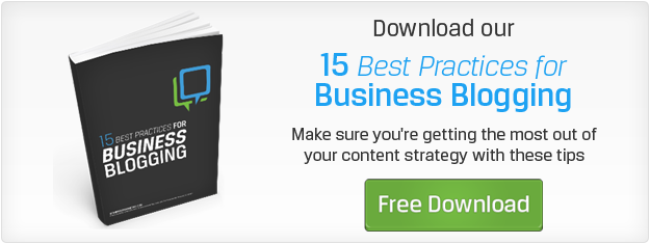 Editor's Note: Since this post was published, Google has removed Authorship functionality entirely. Read more here.
Editor's Note: Since this post was published, Google has removed Authorship functionality entirely. Read more here.
Since June 26th, 2014, photo rich snippets for authors in Google search engine results have been missing. Disappeared. Abandoned. Gone.
For SEO-savvy publishers everywhere, June 26th was a day of sadness and anger. To be honest, a good majority of us were experiencing mild cases of early-stage grief. But that’s the problem with borrowed space; it’s riddled with unpredictability.
So what’s an author to do in these troubled times?
My advice? Move on.
In an effort to “clean up the visual design of search results,” Google removed both photos and circle counts from search engine results pages. Unlike previous changes to authorship markup, the newest parameters work to level the playing field. For Google, the end-goal is to focus on quality content for their customers. Rather than giving some authors the upper-hand, Google is providing a fair chance for less-known authors to appear in a somewhat similar fashion as someone like Rand Fishkin or Neil Patel.

If you’ve completed the necessary steps and setup authorship markup, you’ll still have a slight advantage. Search results with authorship markup still highlight the author’s name within the listing as shown in the image. As such, you’ll still gain a slight advantage if you’ve completed authorship markup, so it is still recommended that you do. But without eye-catching photos, you really can’t rely on authorship alone to attract views.
It’s time to go back to basics.
Ready to bust out your traditional optimization methods? Here’s what you’re going to need to do in order to stand out from the crowd:
1) Write a “Clickable,” 65 Characters or Less, Keyword-driven Title
Ok, I realize this is easier said than done, but it’s the single-most driving factor for organic search clicks; so spending that extra time on your title is definitely worth the effort.
In many platforms, (including HubSpot), your blog post title will automatically be defined as the page’s title tag, which also happens to be the blue text that Google uses on search engine results pages (SERPs).
There are endless resources to help you concoct a perfect title that will catch searchers attention, and improve click-through-rates, but my best advice in these regards is to think on behalf of your buyer personas.
By discovering your buyer persona’s pain points, finding a keyword to match and phrasing your title in a way that will answer your persona’s needs, you’ll be well on your way to click-through glory. So how do you do this?
Determine your buyer persona’s pain points.
Why is your persona using a search engine? Think about the last few times you’ve been on Google; I’m willing to bet that you had a question, and you were looking for an answer. Chances are, your personas are doing the same exact thing. So why not be the person to answer their question?
If you’re unsure of your persona’s pain points, try doing a bit of keyword research to uncover the information your personas are searching for. It’s really amazing what you’ll find as you actively search through their journey as a consumer.
Lastly, you’ll want to whip out your advertising skills to match title phrasing with consumer behavior. What type of phrasing will your persona respond to? For example, did you know that including a number in your title can double social shares? Start off by using some tried and true title-naming methods, and then measure effectiveness to better optimize future posts.
2) Write an Enticing Meta Description
After the title, the searcher’s eye will naturally wander to the short blurb of text that gives the search result some context. This is called the meta description. This is the space where you can give the searcher an idea of what your page is all about; why they’ll want to click on your page over the 9 other results.
You’ll want to incorporate the same keyword you decided on from your title research, and within 150 characters (or less). A meta description has the power to make or break your click-through-rate so take it a step further and:
- Answer, or hint at the answer, to your persona’s question
- Give a true description of what they’ll find on your page
- Help search engines give context to your page’s content
3) Make a Name for Yourself, Because It’s all You’ve Got Left
(In Google search engines results, that is)
Recognize those names that I mentioned earlier, Rand Fishkin and Neil Patel? If not, well, then you must not be interested in SEO or web analytics, but what I’ll tell you is this: These are well known names within my industry, and they didn’t get there without a bit of ingenuity and dedication.
When I’m searching for SEO tips on Google, I’m more likely to click a page that is authored by someone that I recognize, someone that I trust.
What’s really cool about the internet is that you CAN make a name for yourself. If you’re consistently sharing content within your industry, and expressing your thoughts and opinions, you’re bound to make at least a fan or two. You may not have 50,000 fangirls singing your songs back at you like Taylor Swift, but if you’ve gained the trust of a viewer, you’ve also gained some guaranteed clicks in the future.
Now imagine what this would do for your traffic if you could really drum up a following! Be active on social media, and consistent with blogging. Over time, more and more strangers will know your work by name. (Big thumbs up to anyone who recognizes my name!)
The Bottom Line
By following the 3 tips above, you might even forget that author photos ever existed. Eye catching photos may have been a key driver of clicks past, but relevant, interesting and clever definers that drive qualified traffic are the true CTR-growers of the future.
What are your tips for driving traffic in a post-photo world? Let me know in the comments section!
Image Credit: The Brand Surgery

